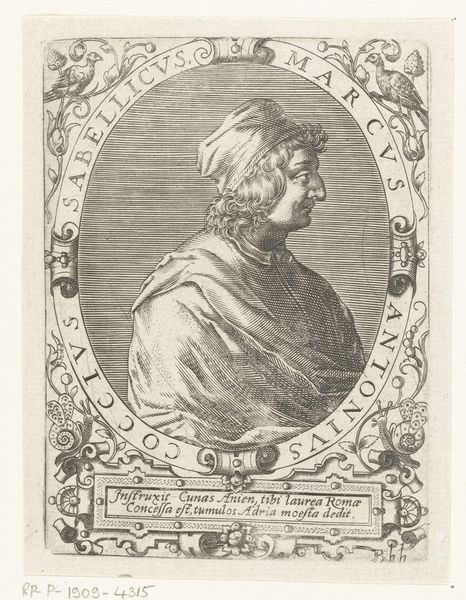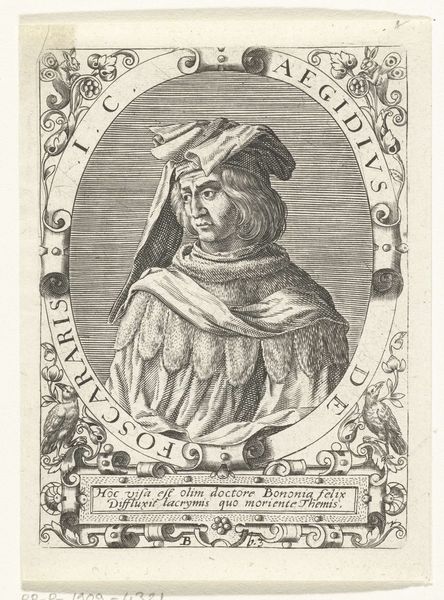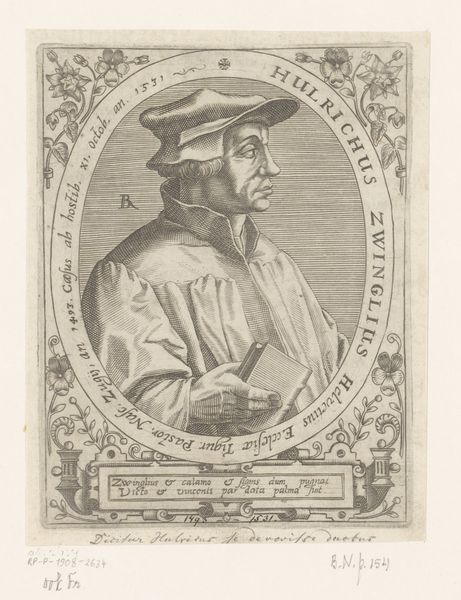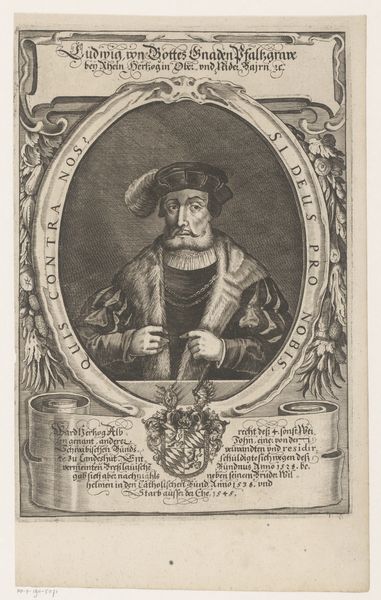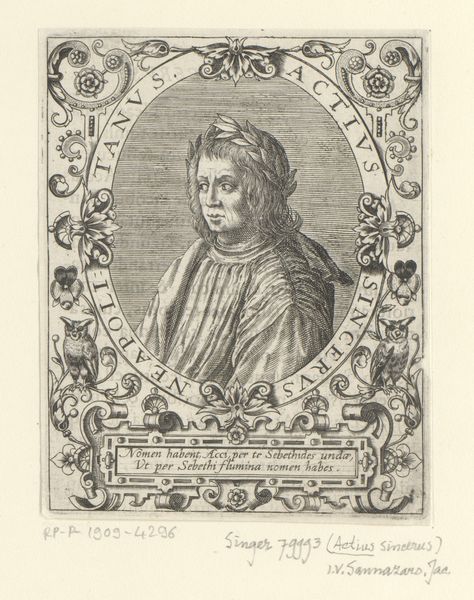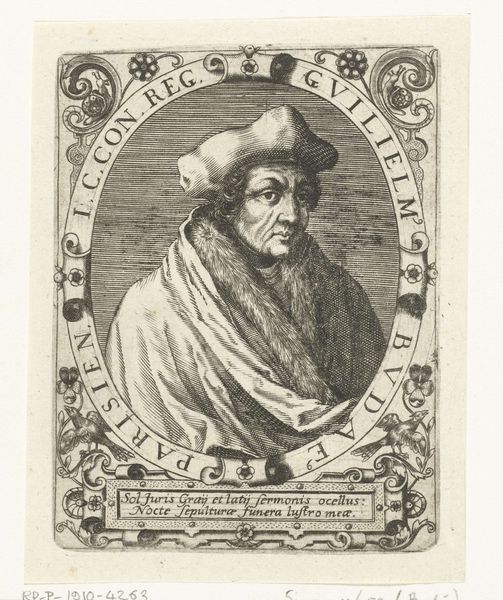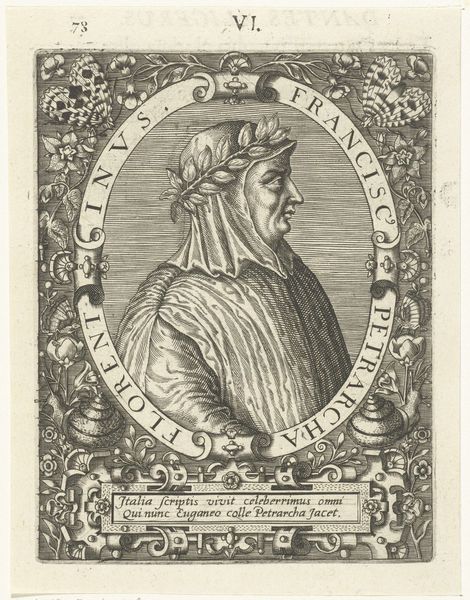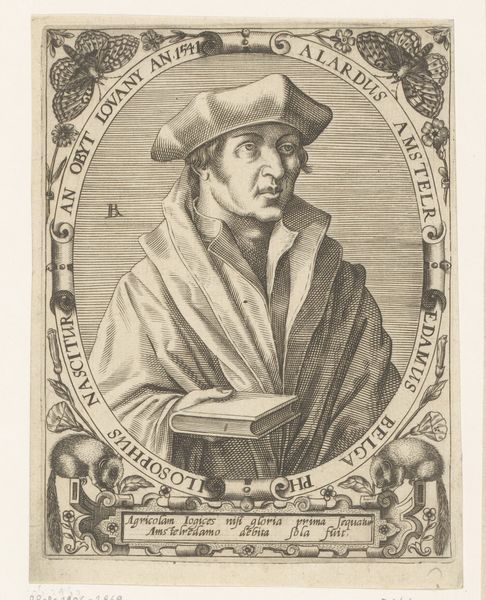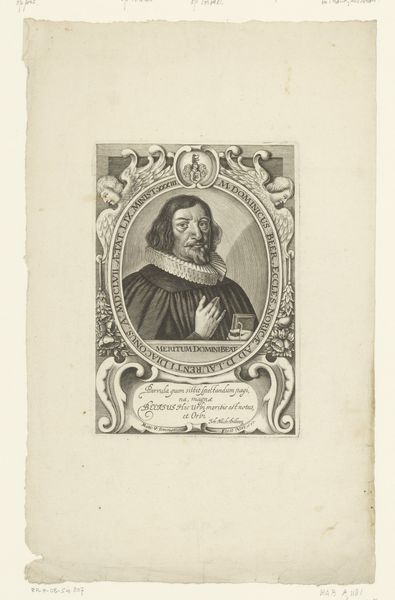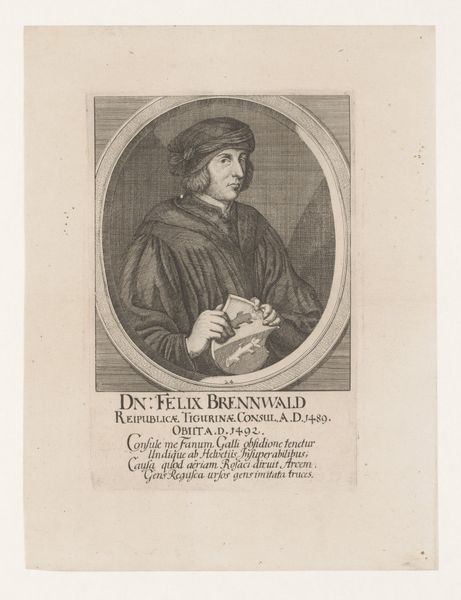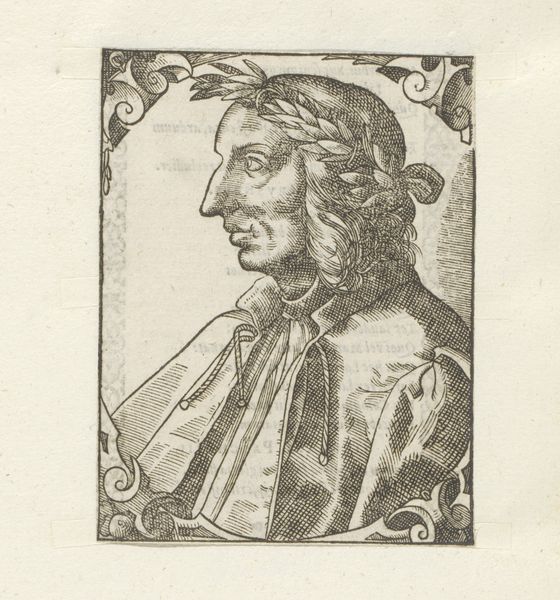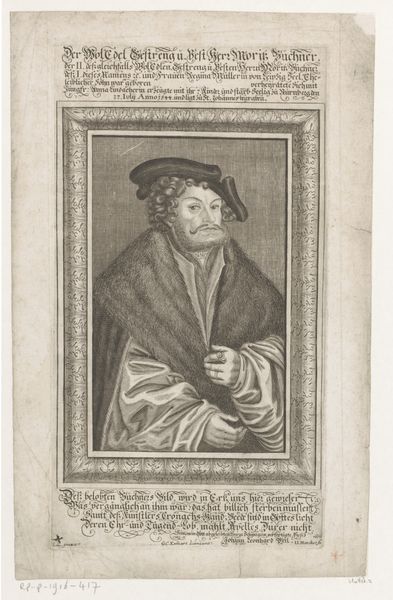
print, engraving
#
portrait
# print
#
old engraving style
#
caricature
#
mannerism
#
engraving
Dimensions: height 140 mm, width 100 mm
Copyright: Rijks Museum: Open Domain
Editor: Here we have Theodor de Bry's "Portret van Johannes de Imola," an engraving from around 1597-1599, held at the Rijksmuseum. There's a real sense of Renaissance swagger, even bordering on caricature in his features. What catches your eye in this portrait? Curator: The enduring symbols surrounding Johannes speak volumes. Notice the bees, traditionally representing industry, diligence, and civic virtue, combined with floral motifs suggesting a flourishing life, both personal and professional. They highlight the cultural aspiration of associating individuals with positive societal values. How do these symbols change your reading of his character? Editor: They do soften the impression, somewhat. I initially saw the strong features and elaborate clothing as ostentatious, but the bees suggest something more than mere vanity. What about the inscription? Curator: Indeed. The Latin phrase translates to "If grace follows well-digested laws, then a civic palm will come to your titles." So, De Bry visually encapsulates his status through symbolic language tied to justice, civic duty and success; all anchored in Roman virtue. It speaks to an interesting, visual form of historical record. Is the weight and density of symbols like these what draw you in to study art history? Editor: Yes, exactly! I am really intrigued by how much a single image from the past, like this engraving, can reveal about cultural values of its time. I think I understand a little more about portraiture's relationship with cultural memory and continuity now.
Comments
No comments
Be the first to comment and join the conversation on the ultimate creative platform.
